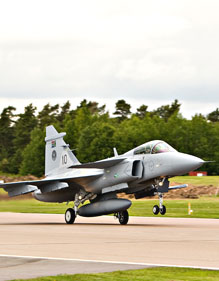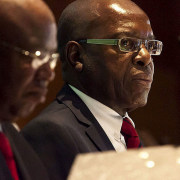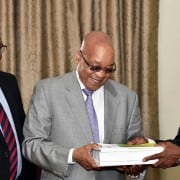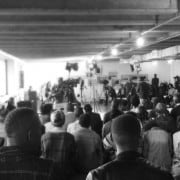|
Getting your Trinity Audio player ready...
|
 By Lee-Ann Alfreds
By Lee-Ann Alfreds
The figures bandied about are staggering. R30-billion. R71-billion. R90-billion. But what is even more staggering is the fact that no one truly knows what the arms deal has cost South Africa.
When the South African government announced the controversial deal in 1999, it stated that the purchase of helicopters, submarines, frigates and fighter aircraft to replenish the national defence force would cost the country R29.9-billion.
The amount, at the time, was more than what was spent on HIV/Aids treatment, bursaries for tertiary education students and low-cost housing combined.
But that wasn’t the true cost of the deal, Paul Holden and Hennie van Vuuren argue in The Devil in the Detail: How the Arms Deal Changed Everything.
They contend that the bill for four corvettes (R6.9-billion), three submarines (R5.4-billion), 30 helicopters (R1.9-billion) and 26 fighter and trainer aircraft (R15.8-billion) tells only half the tale.
Not telling the full story
The government – deliberately or unintentionally – failed to mention that the cost of financing the deal added a further 49% to the bill. And the repayment of these loans – in euros, dollars, pounds and Swedish kroner – would be influenced by the rate of exchange, which has fluctuated over the past 15 years.
The depreciation of the rand against the dollar increased the bill to R43.1-billion by 2008, the budget vote on defence showed, with a further R4.3-billion to be spent by 2011, bringing the total to R47.4-billion. In a parliamentary answer in June 2011, it was reported that R7.9-billion interest had accrued on the arms deal procurement loan facility by 2011.
But the revised figures from the government still do not tally for many experts.
In a paper published in 2008, Justin Sylvester and Professor Annette Seegers of the University of Cape Town calculated the cost of the deal to be a whopping R90-billion, while Holden and Van Vuuren believe the true cost to be closer to R71.2-billion than the government’s stated R47.4-billion.
Holden said this figure was based on taking the “stated cost according to the 2008 Department of Defence budget line item for the SDPP, which was near R48-billion. I then added 50% of that figure to arrive at R72-billion as the Joint Investigation Report confirmed that financing costs were equivalent to 50% of acquisition costs”.
But he admits that this might also not be correct as “we have no firm idea, to be honest” of the actual cost. “The best estimate I've been able to come up with is R70bn+ … it could be even more than this.”
Why even more? Because the loans will only be fully repaid by 2018.
“Admittedly, the bulk of the loan payments have been paid off by now – as far as I know, the loan payments tapered off in size towards the end of the loan cycle,” said Holden.
Hidden costs
Rands and cents aside, however, Holden and Van Vuuren argue that there are other costs which have not been taken into account. One is the opportunity cost – what South Africa could have spent the money on had it not bought the arms.
These lost opportunity costs include creating jobs, spending money on HIV/Aids treatment, building more houses and funding municipal infrastructure among other priorities.
Holden and Van Vuuren point out that instead of deepening unemployment, as the arms deal did, the billions could have been used to employ 53 000 doctors a year for six years.
Another cost was that of maintaining the arms – an issue that has been thrown into sharp relief by reports that most are not operational. The utilisation of the arms is one of the issues the Seriti Commission – currently underway in Pretoria – is tasked with establishing.
Newspapers reported last year that none of the helicopters purchased were being used as there wasn’t enough money to fund them, while 12 of the 26 aircraft were in long-term storage. In 2012, all three submarines were in dry dock for maintenance while only one frigate was in operation. Two other frigates were in for maintenance and the fourth needed a new engine that could only be installed in Germany. The corvettes were reclassified as light frigates in 2006.
The arms deal has placed an “intolerable burden” on the defence force, Holden and Van Vuuren noted. It meant the Department of Defence spent a disproportionate amount of its budget – 45.8% in 2003 for instance – on acquisitions, leaving only 19% for operational costs. This led Jakkie Cilliers of the Institute for Security Studies to note in 2003 that “there is a structural crisis building up which at some stage is going to blow up in our faces”.
The defence force could not train or regenerate, he said then. “It cannot replace more mundane equipment, such as uniforms and troop carriers. There is no money to retrench surplus troops, no money to replace key personnel, no money to fund operations.”






